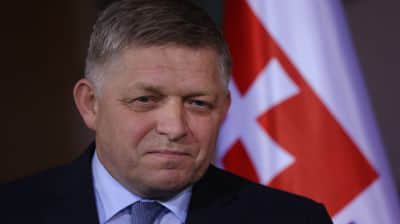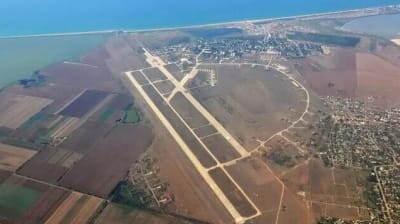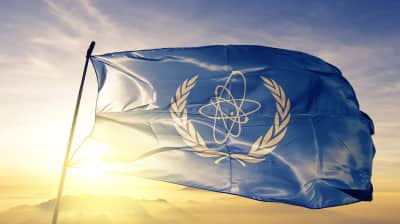From Moscow to Urals up to 200m underground: Russian investigative journalists reveal Russian president’s chain of bunkers

Russian President Vladimir Putin has an extensive chain of secret bunkers stretching from Moscow to the Urals, and new underground shelters continue to be built in Russia.
Source: investigation by the Sobesednik (‘Interlocutor’) media outlet; Oleg Roldugin, Editor-in-Chief and author of the investigation, in an interview with the Dozhd TV channel
Quote by Roldugin: "Bunkers had been built even in Soviet times for top state officials, but this has intensified lately. We know for sure that there are bunkers in Moscow, in the Urals and in the Volga region."
Details: According to Roldugin, Putin has two bunker systems, including those on and those off the record.
The "official" bunker system is within the purview of the Chief Directorate for Special Programmes of the Russian president, a separate official security body that is subject directly to the president.
In the course of the investigation, Roldugin found out that the same construction workers who build the official bunkers and tunnels under Putin’s palace in Gelendzhik [Krasnodar Krai] are also building private shelters for the president.
The number of private bunkers is significantly higher than those which can be identified from official contracts or other documents.
As the journalist reports, diggers have revealed that the tunnels in Moscow go down up to 200 metres underground; they accidentally found those tunnels, were sentenced to probation or actual prison terms and had to leave Russia.
Roldugin added that after Putin became president, renovation of the bunkers began. For instance, the lifts to the Moscow bunkers were modernised, worth 55 million roubles [approximately US$902,000 - ed.] being spent on three lifts.
Quote from Roldugin: "The scale of the project makes it possible to draw conclusions about the depth of the bunkers, what kind of lifts and shafts are installed under Moscow. The agency that deals with building shafts for missile launchers was responsible for this modernisation. Many bunkers are connected with one another by tunnels that are dozens of kilometres long."
Where are Putin’s bunkers?
First of all, there are hidden tunnels under the centre of Moscow. According to journalists, the well-known Metro-2 system [unofficial name for previously classified bunkers - ed.] connects government buildings in Moscow (primarily the Kremlin) with bunkers in the capital, as well as in the cities of Balashikha, Chekhov and Kaluga.
The Sobesednik outlet discovered one of the secret entrances to the tunnel near Michurinsky Avenue in Moscow.
The journalists reported that there are dozens of such facilities in the capital of the Russian Federation in different locations: Luchnikov Lane (not far from Lubyanka Square, site of the FSB headquarters and prison), Krestovozdvizhensky Lane (near the Ministry of Defence), and Taganka (near Stalin’s bunker). A lot of them are also concentrated around the former wasteland that diggers call Ramenki-43, saying there is an entire underground city on that site that is connected to the Kremlin by tunnels.
Additionally, there are underground shelters under Putin’s palace in the town of Gelendzhik.
The journalists investigating the matter believe that there is another bunker in Mount Yamantau, in a well-hidden town in the Urals called Mezhgorye; it lies to the south of Yekaterinburg and somewhere between Magnitogorsk and Ufa.

The "closed administrative territorial formation" (secret cities, known as ZATO in Russian) of Mezhgorye appeared, combining two military settlements, Beloretsk-15 and Beloretsk-16, located 20 kilometres from one another. In general, about 15,000 people live there. Even locals can enter the city only with special permits.

The journalists pointed out that some work in Mount Yamantau has intensified lately. A lot of money is being spent on it. Russian aircraft have imposed a no-fly zone over the mountain, and it is difficult to get there by foot.
Soldiers, "jaegers" [light infantry - ed.] and, judging from the state contracts, DJI Mavic 2 Enterprise Advanced drones with 32-fold zoom and thermal cameras (which cost between 500,000 and 1 million roubles per unit; [between US$8,000 and 16,000 - ed.]) are involved in maintaining security for this construction.
Who builds the bunkers?
As Roldugin stated, Construction Management No.30 is responsible for building the bunkers. Its operations are supervised by the Chief Directorate for Special Programmes of the Russian President.
Legally speaking, the Chief Directorate for Special Programmes of the Russian President (CDSP) is the successor to the Fifth Department of the Affairs of the Council of Ministers of the Russian Soviet Federative Socialist Republic, the main task of which was to build new and modernise existing sites for political and military leaders in case of war.
Aleksandr Linets, a former officer of the Federal Security Service (FSB), has been the Head of the CDSP since 2015. He previously led the Department of the FSB in the Southern Military District. Putin trusts this person, as can be seen from the fact that Linets moved to a 176.7 m2 apartment in the CDSP building on Bolshoy Tishinsky Lane in Moscow.
Anton Vayno, the head of the Kremlin administration; Sergey Naryshkin, the Director of the Foreign Intelligence Service; and Aleksandr Bastrykin, the head of the Investigative Committee, have also received some property in the same building.
Several military units are stationed in the CDSP; they operate in both Moscow and remote regions of the Russian Federation. The contingent consists of people who have been tried and tested over many years of service.
The news outlet investigating the matter stated that very recently, the Russian Federation started signing new state contracts. These documents concern the verification of radiation and chemical reconnaissance devices that are to be used on the armoured targets; the purchase of systems to detect channels of information leaks and of bugs detectors; equipment for a system to install hydroacoustic and acoustic obstacles, hardware and software for psychodiagnostic systems, breathing devices that use compressed air, etc.
Journalists fight on their own frontline. Support Ukrainska Pravda or become our patron!





